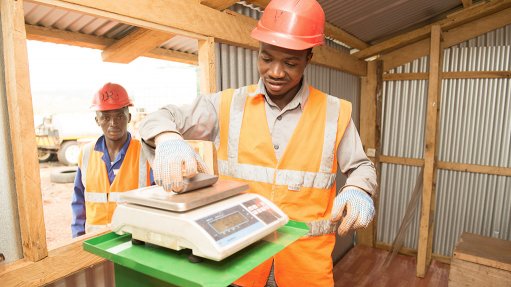
Name: Nimba mine.
Location: The Nimba iron-ore deposit is located in the far north-west of Liberia, close to the border junction with Guinea and Côte d’Ivoire.
Controlling Company: Sable Mining.
Brief History: Sable Mining acquired the interest in Nimba in February 2012 through the group’s 80%-owned Guinean subsidiary, West Africa Exploration. The group initiated exploration activities at Nimba in March 2012 to assess the resource potential of the project and demonstrate its viability for commercial production in the near term. A preliminary feasibility study completed on the project in March 2014 demonstrated a commercially attractive high direct shipping ore (DSO) grade iron-ore development project.
Brief Description: Nimba is a significantly new iron-ore discovery, demonstrating that it is one of the largest undeveloped on- or near-rail DSO projects not owned by the major mining companies in West Africa.
Geology/Mineralisation: Nimba’s high-grade iron-ore mineralisation occurs at surface. This surface mineralisation stems from the unique way in which the Nimba orebody evolved. Located at the base of a very steep mountain, Mount Nimba, the project’s plateaux was historically the subject of a high-energy environment within which noniron boulders were essentially smashed. The boulders eroded at the base, forming high-grade canga in deep palaeo-channels.
Resources: Total Joint Ore Reserves Committee resources as at February increased from 181.8-million tonnes at an in situ grade of 58.8% iron to 205.2-million at average in situ grade of 57.8%, both were estimated at an iron cutoff of 40%.
Products: The mine will produce a high-grade iron (60% to 63%) DSO product.
Mining Method: Openpit and truck and shovel mining from multiple openpits for selective mining and blending.
Major Infrastructure and Equipment: The proposed mine will comprise two mobile plants to produce three-million tonnes a year of lump and fines DSO product.
It is envisaged that a simple dry plant process, involving crushing and screening will produce a high-grade lump product in the early stages of production followed by the introduction of a wet process, which will be fully able to produce a high-grade lump and fines product.
Prospects: A full bankable feasibility study is expected to be published in the first quarter of 2016, which will also include infrastructure development requirements in Liberia.
Contact Person: Andrew Groves
Contact Details:
Sable Mining Africa,
tel +44 20 7408 9200,
email info@sbmf.co.uk, and
website www.sablemining.com.